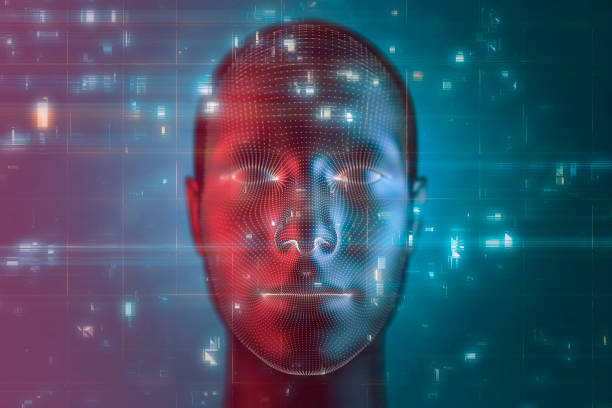In today’s fast-paced world, the importance of integrating advanced technologies into educational frameworks cannot be overstated. The advent of AI Operating Systems (AIOS) has heralded a transformative era in education technology, offering personalized user interfaces and innovative solutions for diverse learning needs. This article explores the impact of AIOS on education, focusing on its personalized user interface, the role of AIOS in industrial automation, and how these advancements can streamline educational processes and outcomes.
.
### The Rise of AIOS in Education
AI Operating Systems (AIOS) are sophisticated platforms that leverage artificial intelligence to enhance user experiences across various sectors, including education. With their ability to process vast amounts of data and adapt to users’ preferences, AIOS is redefining the educational landscape. From interactive learning environments to efficiency in administrative tasks, AIOS provides tools that cater to the unique requirements of learners and educators alike.
.
#### Personalized User Interfaces in AIOS
One of the standout features of AIOS is its capability for creating personalized user interfaces (UIs). In an educational setting, a personalized UI can significantly impact students’ engagement and learning outcomes. By analyzing user data, AIOS can adapt the content presented to each student based on their learning pace, style, and preferences.
For example, an AI-based education platform could modify its dashboard to present the most relevant resources tailored to each student. A struggling student might receive additional practice problems and tutorial videos, while a more advanced learner might see challenging projects and research materials. This adaptability not only keeps students engaged but also helps educators identify areas where individual students might need additional support or enrichment.
.
### Innovations in Educational Content Delivery
AIOS also plays a critical role in enhancing content delivery through personalized learning pathways. With features like predictive analytics, AIOS can forecast student performance and suggest specific content or interventions to facilitate better outcomes.
Educational institutions adopting AIOS are experiencing increased efficiency in curriculum delivery. For instance, online platforms utilizing AIOS can analyze real-time data on student interactions to adjust lesson plans dynamically. This ensures that students receive the information they need at the right time, fostering a deeper understanding of the subject matter.
.
#### Adaptive Learning Technologies
Adaptive learning technologies powered by AIOS are revolutionizing how educational content is consumed. These technologies assess each learner’s grasp of the material and adjust the difficulty level accordingly. For example, platforms like DreamBox Learning for mathematics adapt in real-time as students progress, offering them tailored problems that enhance their skills without causing frustration or boredom.
In addition, personalized assessments provide educators with valuable insights into individual student performance. Tools like Canvas and Blackboard incorporate AI to generate reports that highlight students’ strengths and weaknesses, enabling targeted interventions that can lead to improved educational outcomes.
.
### AIOS for Industrial Automation: Bridging the Skills Gap
While the application of AIOS in education is profound, its influence extends beyond the classroom. The integration of AIOS in industrial automation is increasingly recognized as a means to bridge the growing skills gap in the workforce. The automation of mundane tasks and processes allows workers to focus on more complex, problem-solving roles, which will be crucial as technology continues to evolve.
.
### Enhancing Workforce Development
With industries rapidly changing due to technological advancements, AIOS can provide training and educational programs that cater specifically to the needs of the workforce. Consider the example of Siemens, which integrates AIOS into its manufacturing operations to train employees effectively. The AIOS-driven platforms leverage simulation and virtual reality to provide immersive training experiences that prepare workers for the sophisticated tasks they will perform.
Furthermore, AIOS can facilitate continuous learning opportunities. Platforms built on AIOS encourage employees to upgrade their skills regularly in response to industry trends. This cultural shift towards lifelong learning can significantly improve a workforce’s adaptability, efficiency, and effectiveness.
.
#### Real-World Case Studies of AIOS in Education and Industry
Numerous case studies demonstrate the successful implementation of AIOS both in education and industrial automation. For example, McGraw-Hill Education has harnessed the power of AIOS to create a personalized learning experience through its Connect platform. This platform assesses student interactions and produces adaptive learning paths tailored to individual backgrounds and responses, resulting in improved retention of concepts and enhanced academic achievement.
In the industrial sector, Rockwell Automation employs AIOS to integrate data and analytics into manufacturing processes. Their FactoryTalk platform leverages AI to optimize performance, minimize downtimes, and ensure that workers are supported through real-time insights and ongoing training modules, redefining productivity.
.
### Future Trends: The Convergence of AIOS and Emerging Technologies
As technology continues to advance, the convergence of AIOS with emerging trends will further transform education and industrial automation. Augmented reality (AR), virtual reality (VR), and the Internet of Things (IoT) are all set to play pivotal roles in creating even more immersive learning environments.
AIOS can dynamically connect IoT devices to enhance educational outcomes, making learning experiences interactive and engaging. For instance, smart classrooms equipped with AIOS can allow for real-time feedback, provide data analytics, and adapt instantaneously to optimize learning conditions based on environmental factors such as noise levels or light.
.
### Ethical Considerations: Navigating the Implications of AIOS
As educational institutions and industries embrace AIOS, the ethical implications of such technologies must be continuously addressed. Data privacy and security, algorithmic bias, and our society’s reliance on machines for critical skills are concerns that require diligent attention.
To navigate these issues, stakeholders must establish comprehensive policies governing data usage while advocating for transparency in how AI algorithms operate. As AI continues to influence decision-making in both education and industry, it becomes imperative to ensure that these technologies operate fairly and inclusively.
.
### Conclusion: A Comprehensive Future
The trajectory of AIOS in education technology and industrial automation signals profound transformation not only in how knowledge is imparted but also in how industries operate. With personalized user interfaces that cater to individual learning needs, adaptive learning technologies, and ongoing workforce development, the time is ripe for stakeholders to embrace these advancements. By doing so, we can cultivate future-ready learners and workers equipped with the skills necessary to thrive in a rapidly evolving world.
As we stride into this new era, it is vital for educators, industry leaders, and policymakers to collaborate, ensuring that the implementation of AIOS maximizes efficacy while addressing the ethical considerations that accompany technological advancement. The future of education and industry is bright, and AIOS stands at the forefront of this evolution.
.
### Sources:
1. McGraw-Hill Education. (2021). Connect: Personalized Learning.
2. Siemens. (2022). Simulation and Virtual Reality Training in Manufacturing.
3. Rockwell Automation. (2021). FactoryTalk: A New Era of Automation.
4. DreamBox Learning. (2023). The Future of Adaptive Learning in K-12 Education.
5. Canvas. (2021). Data Analytics for Educators: Using AI for Insights.
**AIOS for Industrial Automation: Streamlining Efficiency and Productivity**
In the complex landscape of industrial automation, AI Operating Systems (AIOS) have emerged as a game-changer, streamlining processes, and enhancing productivity. AIOS facilitates the efficient management of machine operations, data flows, and workforce activities, ensuring that industries can keep pace with technological advances and the demands of modern economies. This article will delve deeper into AIOS’s role in industrial automation, illustrating practical applications and the resulting benefits for companies operating in diverse sectors.
.
### Understanding AIOS in Industrial Automation
AIOS provides a standardized platform upon which various applications can be built, enhancing the processing of large datasets and enabling intelligent decision-making in real time. This operational efficiency leads to reduced costs, improved safety, and increased production rates. As industries embrace AIOS, the scope of automation extends from routine tasks to complex operational management, effectively transforming production lines.
.
### Key Benefits of AIOS in Industrial Automation
1. **Real-Time Monitoring and Control**: AIOS enables manufacturers to monitor their operations in real-time, providing critical insights into machine performance and operational efficiency. This capability not only enhances preventative maintenance strategies but also minimizes unplanned downtimes, ensuring smoother production flows.
2. **Predictive Analytics**: By leveraging machine learning algorithms, AIOS can analyze historical and real-time data to predict equipment failures before they occur. This proactive approach to maintenance allows organizations to address issues before they impact production, leading to significant cost savings.
3. **Enhanced Decision-Making**: The integration of AIOS into industrial workflows allows organizations to make informed decisions backed by data. By utilizing AI for advanced analytics, businesses can identify trends and optimize their operations to maximize efficiency and productivity.
.
### Use Cases of AIOS in Industrial Automation
#### Manufacturing Sector
In the manufacturing sector, AIOS has revolutionized production processes by improving supply chain management and resource allocation. Manufacturers like General Electric (GE) have adopted AIOS to optimize their production schedules, reduce inventory levels, and enhance supplier collaboration.
By integrating an AIOS framework into their operational processes, GE has reported substantial cost reductions and optimized resource utilization. The flexibility of AIOS allows manufacturers to adjust their operations in response to market fluctuations promptly.
.
#### Energy Sector
AIOS is also making significant strides in the energy sector, where it is being employed to optimize power generation and distribution. Companies like Siemens are using AI to monitor grid performance and optimize energy consumption patterns.
The integration of AIOS allows for the intelligent distribution of energy, thus reducing wastage and enhancing the sustainability of energy systems. Real-time data analytics enables utilities to predict demand spikes and optimize the deployment of resources efficiently, ensuring that energy sources are best utilized.
.
#### Logistics and Supply Chain
AIOS is transforming logistics and supply chain operations by automating routing, inventory management, and order processing. Companies like Amazon incorporate AIOS into their supply chain operations, leveraging algorithms that optimize delivery routes in real time based on traffic patterns, weather conditions, and order volume.
This sophisticated level of automation enhances customer satisfaction by ensuring timely deliveries while also reducing operational costs through efficiency improvements.
.
### Future Directions for AIOS in Industrial Automation
As AI technologies continue to evolve, the future of AIOS in industrial automation promises further advancements. Emerging technologies such as 5G will enable faster communication and data exchange between machines and AIOS, enhancing responsiveness and operational flexibility.
Moreover, as AIOS platforms become more integrated with edge computing, organizations will be able to process data closer to the source, leading to faster decision-making and improved operational efficiency.
.
### Conclusion: Embracing the AIOS Revolution
The integration of AIOS into industrial automation is more than just a trend; it is a necessary evolution for organizations aiming to stay competitive in the digital age. With its comprehensive suite of functionalities, AIOS enhances productivity, reduces costs, and fosters innovative practices within industrial operations.
As industry leaders continue to leverage the power of AIOS, the potential for transformative change grows exponentially. Embracing this technological revolution is not only essential for operational success but also critical in addressing the challenges of a rapidly changing global market.
.
### Sources:
1. General Electric. (2023). Digital Wind Farm: Optimizing Production Efficiency.
2. Siemens. (2022). AI in Energy Management.
3. Amazon. (2021). Innovations in Supply Chain Solutions.
4. McKinsey & Company. (2020). The Future of Industrial Automation.
5. Deloitte. (2022). The Impact of AI on Global Manufacturing.
In conclusion, the synergy between AIOS and education technology, along with its applications in industrial automation, presents vast opportunities for improvement in both sectors. The future is bright, with advancements in AI enabling organizations to innovate and evolve in ways previously thought unattainable.



























